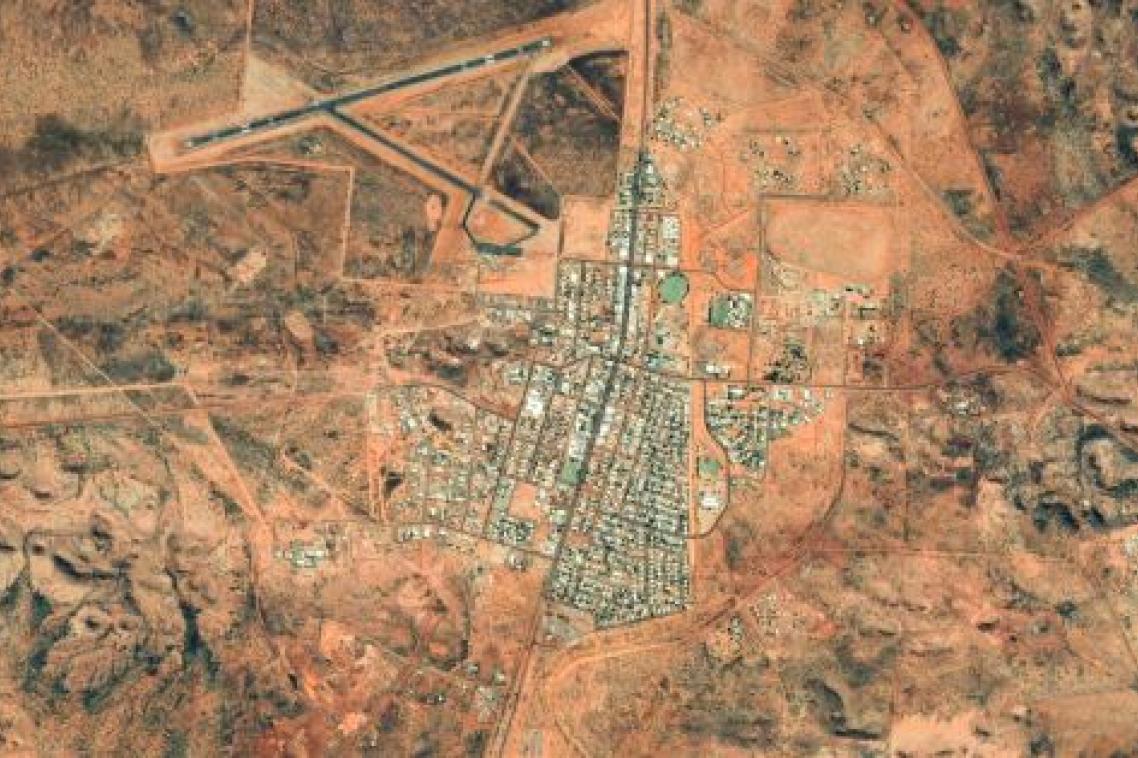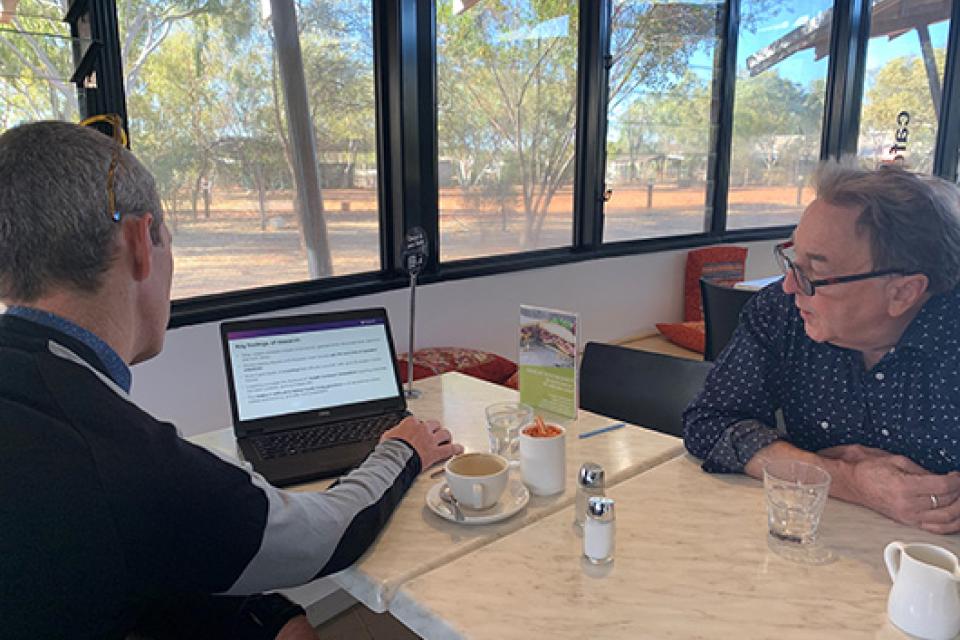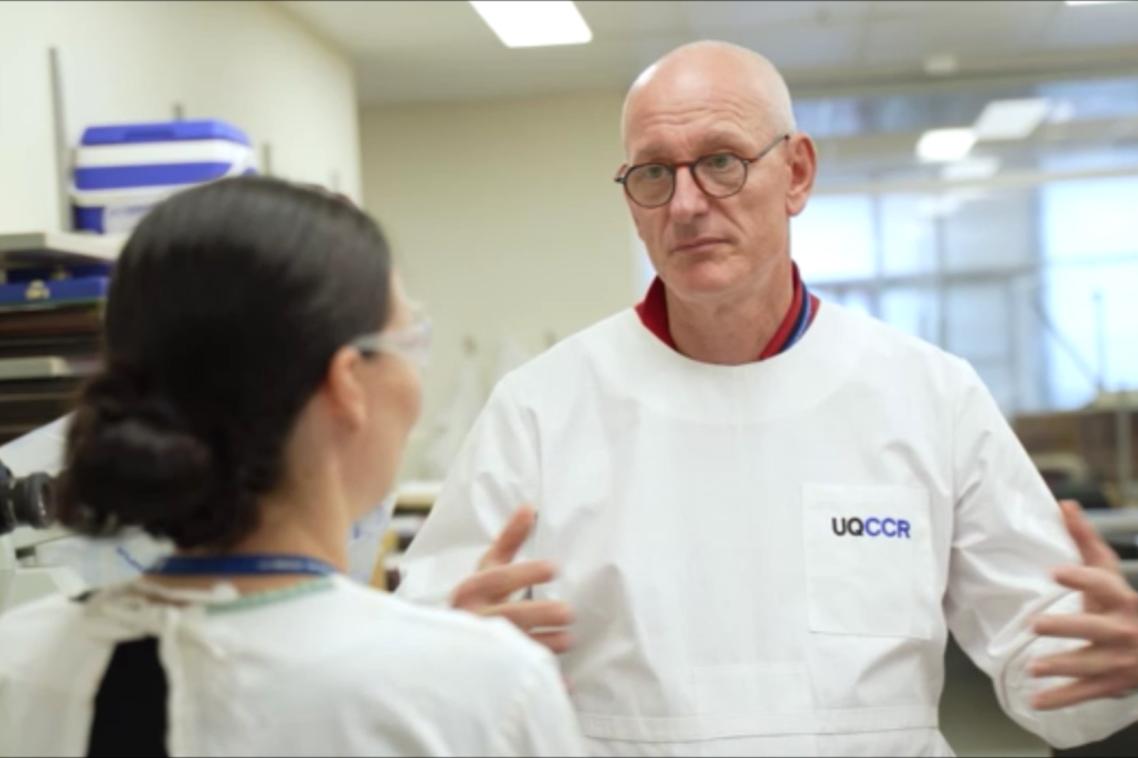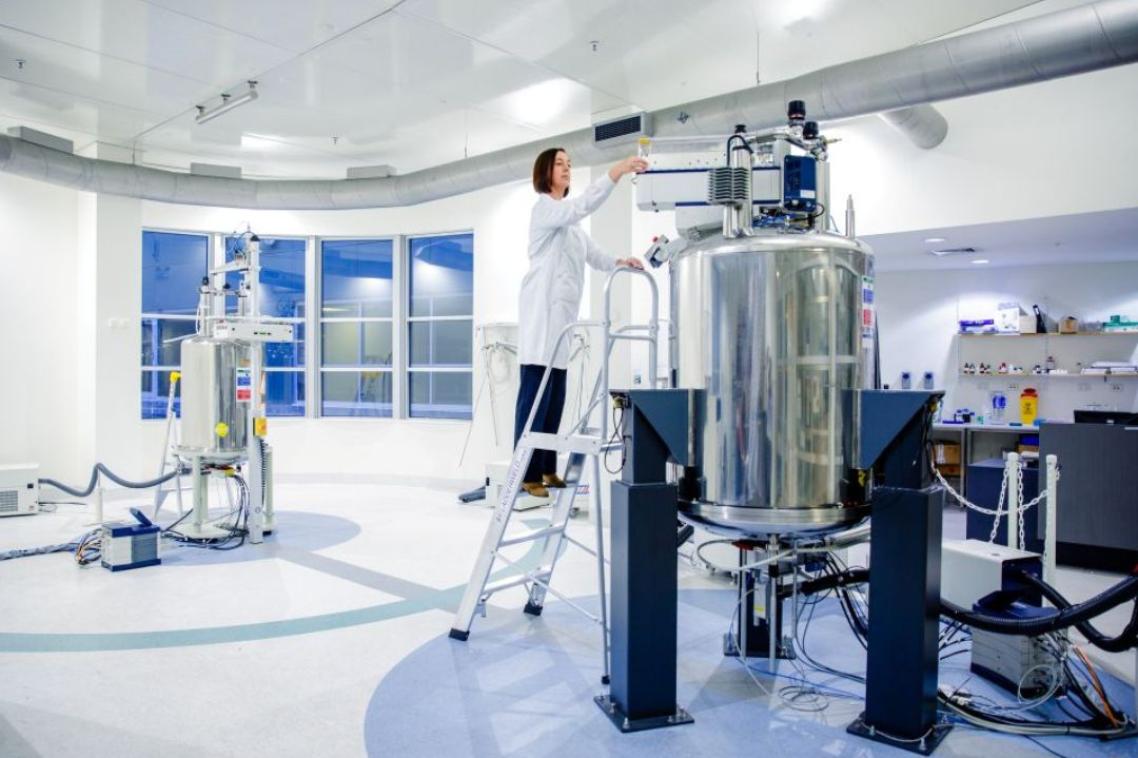How housing affects health on remote Country

The housing crisis is currently a hot-button issue making headlines Australia-wide.
But it’s been endemic in Central Australia for decades.
A chronic shortage of available housing in remote Indigenous communities has significant consequences, with unintended household crowding ultimately contributing to the poor health of residents.
University of Queensland anthropologist and architect Professor Paul Memmott has been visiting the Barkly region in the centre of the Northern Territory for decades.
He’s part of a multi-disciplinary team of five UQ researchers who collaborated with local medical service, Anyinginyi Health Aboriginal Corporation, to examine the link between housing and health for Indigenous people living on remote Country.
The resulting study, Pilyii Papulu Purrakaj-ji (Good housing to prevent sickness), last night won a UQ Research Partnerships and Translation Award (RPAT).
“We co-designed a research project to investigate the relationship between housing, crowding and infectious diseases,” Professor Memmott said.
“But importantly, it also collated an evidence base to advocate for change.”
Residents in the NT’s Barkly region can wait up to 7 years for social housing.
Additional housing stock promised in 2007 is yet to be built.
“Houses designed for 4 or 5 people are being used by many more,” Professor Memmott said.
“We found the average household in Tennant Creek consisted of 10 people, but some had up to 25 family members living there.”

“A lot of the social housing in Central Australia is 40 years old, and hasn’t fared well in the harsh environment,” Professor Memmott said.
“As well as things like broken fly screens and missing louvres, there are toilets, sinks and hot water systems that haven’t been repaired or replaced when they needed to be.
“When those sorts of facilities aren’t working for long periods of time, it can lead to preventable hygiene-related infections.”
Despite a mandated maintenance manual, repairs can be delayed for months, leaving residents without access to hot water for showers or washing.
Study co-author Dr Nina Lansbury from UQ’s School of Public Health said household crowding puts further strain on domestic hot water systems and washing machines.
“These are the types of ‘health hardware’ that help keep germs at bay in our homes,” Dr Lansbury said.
“But when they’re being used more often, they break down faster and in Central Australia you can’t replace them easily or quickly.”
Dr Lansbury said it was also likely that infections could spread as people used the same benchtops or sleeping spaces due to limited resources such as spare linen and cleaning products.
Anyinginyi staff treat high rates of skin infections like boils and school sores, as well as respiratory and ear, nose and throat infections.
Study co-author Dr Andrew Redmond from UQ Medicine and the Royal Brisbane Hospital said they’re spread by close contact and thrive in crowded living conditions.

“These sorts of infections might seem innocuous but getting them repeatedly sets up the conditions for chronic disease,” Dr Redmond said.
“Streptococcal A bacteria can cause acute rheumatic fever and rheumatic heart disease (RHD) and infection can be a precursor to chronic kidney disease.
“These conditions can be life limiting, with associated costs for ongoing health care for dialysis and treatment.”
The researchers made two simple recommendations to reduce hygiene-related infections in remote communities – additional housing, and regular repairs and maintenance on existing properties.
“We’d like to see co-design with Indigenous communities to make very real and measurable improvements in this space,” Professor Memmott said.
The research partnership with Anyinginyi continues to strengthen.
Work is also continuing with new partners and additional funding has been committed.
Professor Memmott and Dr Lansbury are chief investigators on a $5 million NHMRC STARFISH Synergy grant, in partnership with the Telethon Kids Institute.
The 5-year project is examining environmental health interventions to reduce Group A Streptococcal transmission as a contributor to RHD.
A second research partnership with an Aboriginal health corporation in Alice Springs is set to consider the impact climate change has on health in remote communities.
Dr Lansbury said the UQ team was excited to be continuing work which has the potential to produce real change.
“All of our projects build on previous research partnership outputs and are co-designed to gather evidence to measurably improve the long-term health of First Nations Australians.”
The cross-disciplinary team from UQ also included Djirrbal woman and architect Dr Carroll Go Sam and anthropologist Dr Daphne Nash.
Image above left: Tin houses ont he outskirts of Tennant Creek, NT, that are used informally as spillover accommodation. Image: supplied.
Image above right: Dr Andrew Redmond and Professor Paul Memmott in Tennant Creek. Image: supplied.
Media contact
Dr Nina Lansbury
n.lansbury@uq.edu.au
+61 (0)415 750 957
UQ Communications
communications@uq.edu.au
+61 (0)429 056 139
Related articles

A meeting of the minds that could transform treatment

UQ experts recognised for national impact
Media contact
UQ Communications
communications@uq.edu.au
+61 429 056 139
